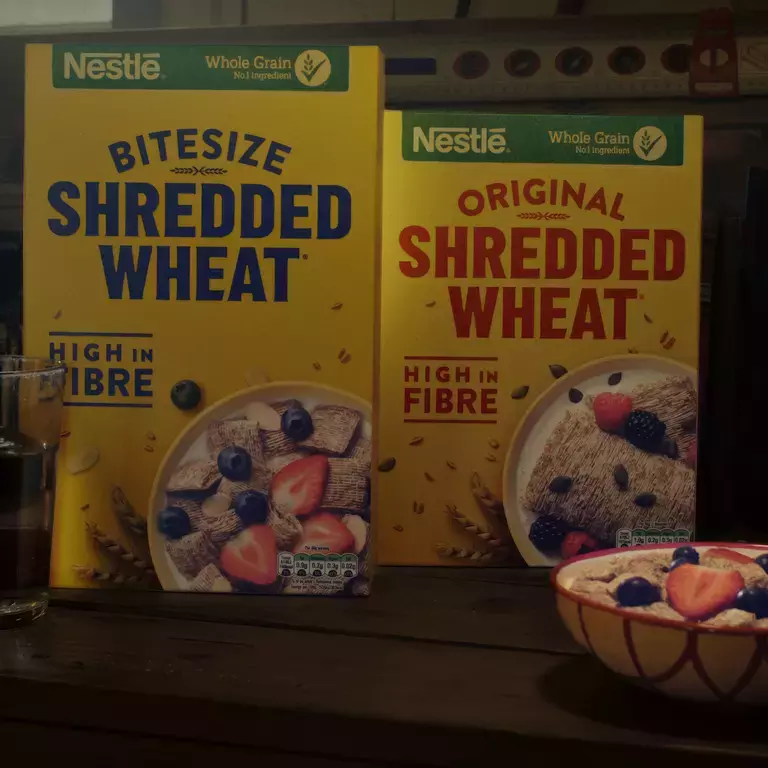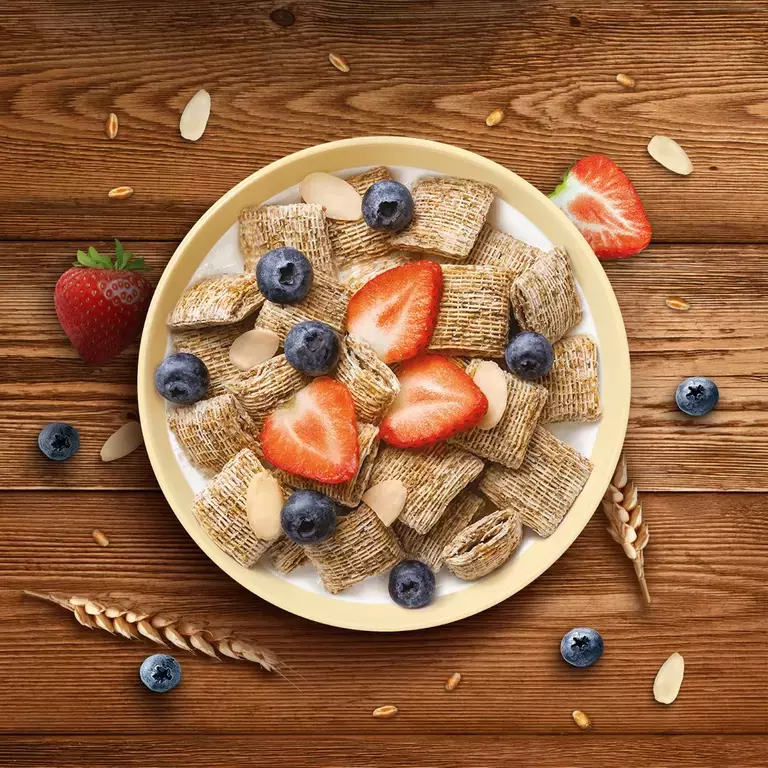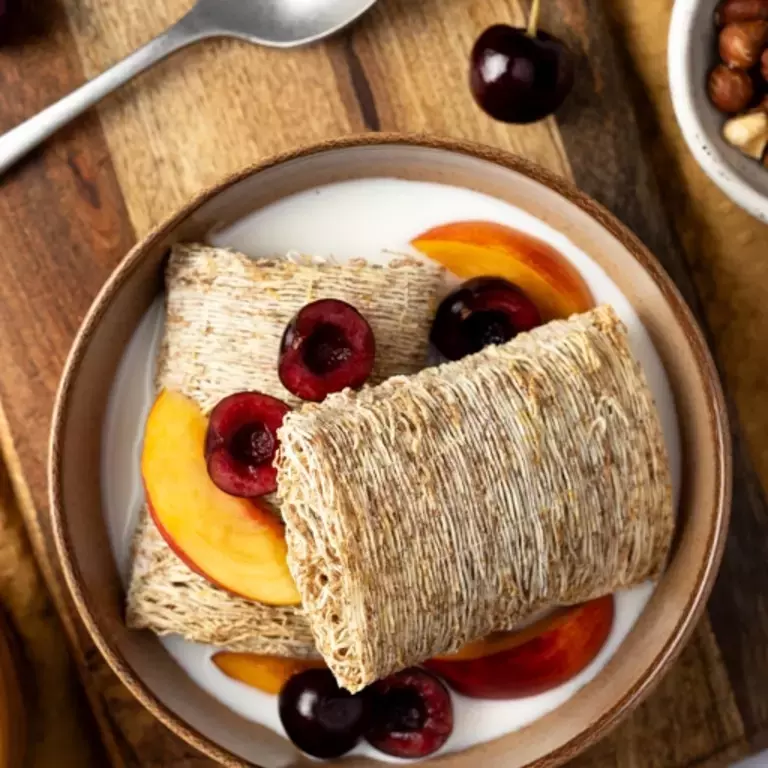Shredded Wheat ® is just one single ingredient: Whole Grain Wheat. Simple.
A delicious, high fibre breakfast cereal with no added sugar or salt*. Because we stick to the simple stuff.
*Applies to Shredded Wheat Original and Bitesize

Shredded Wheat ® is just one single ingredient: Whole Grain Wheat. Simple.
A delicious, high fibre breakfast cereal with no added sugar or salt*. Because we stick to the simple stuff.
*Applies to Shredded Wheat Original and Bitesize

Enjoy our breakfast classics your way every day; whether just with milk or with added seasonal fruits, seeds or nuts.
Jazz up your bowl of SHREDDED WHEAT® with our delicious, seasonal topping inspirations.

When the mornings get darker and chillier, why not take comfort in a bowl of crispy SHREDDED WHEAT®, topped with delicious pears or blackberries, a sprinkle of cinnamon and dash of warm milk.
Get your morning off to a delicious start with a bowl of Shredded Wheat® topped with seasonal spring favourites such as succulent apple slices. Or why not use our SHREDDED WHEAT® to create an Easter treat! Discover our easy Easter Nests recipe.
Add a vibrant pop of colour to your breakfast favourite by adding a handful of fresh & juicy, in-season berries such as raspberries, strawberries and blueberries.
Partnerships with farmers like Ian Matts from Brixworth Farm in Northampton are at the heart of our Nestlé® Wheat Plan.
We are supporting them to move to regenerative farming methods. Over the years to come, this will help improve the natural environment where our wheat is grown.
Regenerative farming is widely recognised to improve the soil’s ability to capture carbon and boost local biodiversity, whilst continuing to grow great quality wheat crops. Better farming, better countryside.
The way we make Shredded Wheat® biscuits at our Nestlé® Cereal factory in Staverton is surprisingly simple: First, the wheat is cooked to soften it, then dried to reduce the grains surface moisture. After a rest for 8 hours, it’s shredding time. The wheat grains are fed through shredding rolls which squeeze them into spaghetti like wheat strands. Formed into the iconic Shredded Wheat® biscuit shape, our breakfast classic gets baked in the oven where it gets its golden colour and delicious crispiness.
Nestlé Shredded Wheat® can be included as part of a healthy and balanced breakfast. Shredded Wheat® Original and Bitesize are made with just 1 ingredient, whole grain wheat.
Yes, whole grain wheat is the number 1 ingredient in every Nestlé® Shredded Wheat® biscuit.
Shredded Wheat® is a breakfast cereal first produced in the UK in 1926. Shredded Wheat® was first invented in the United States in 1893.
We recommend that you enjoy your Shredded Wheat® cereal with a portion of fruit, milk, protein and a glass of water.
Shredded Wheat® can be included as part of a healthy and balanced breakfast. Both Shredded Wheat® Original and Bitesize cereal is made with just 1 ingredient, 100% whole grain wheat, no added sugar, salt or sodium.
Explore our recipes for inspiration on what to make with Shredded Wheat® cereal - from breakfast bars to cupcakes and smoothies!